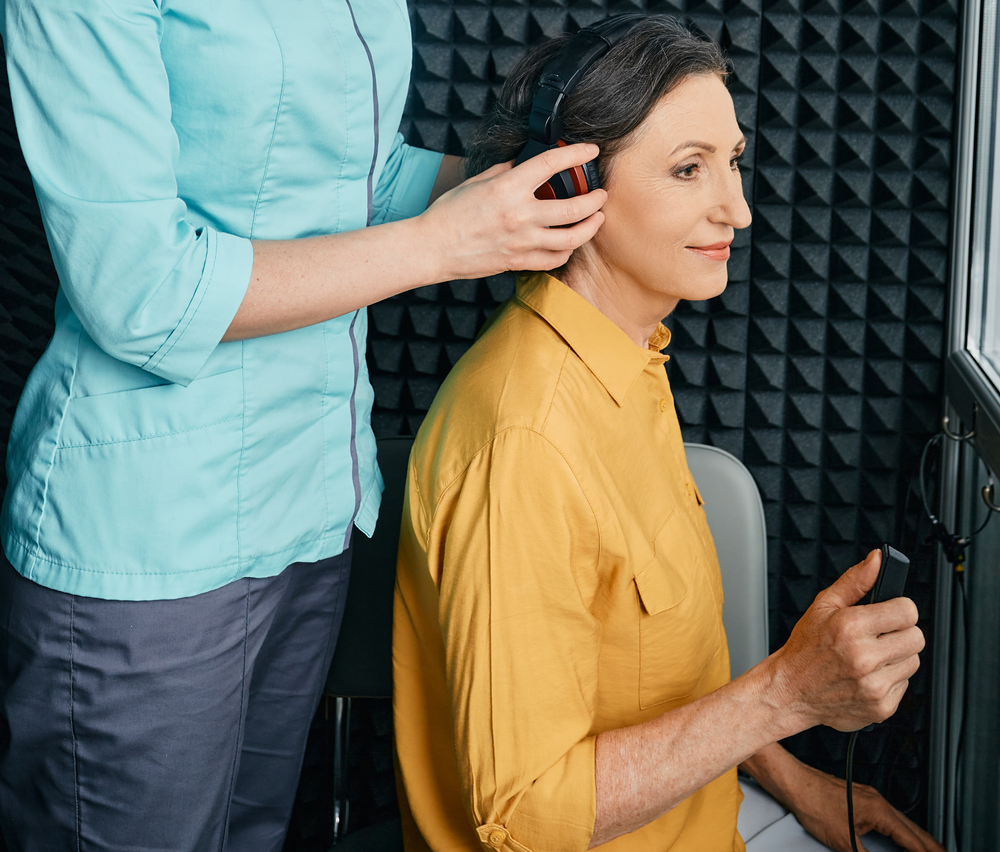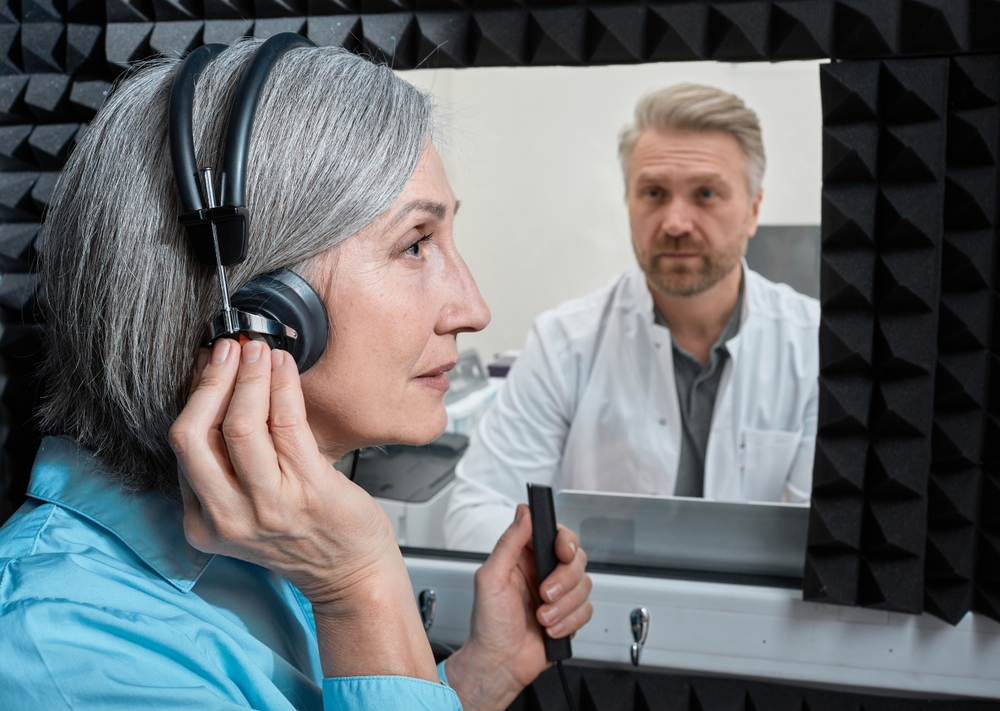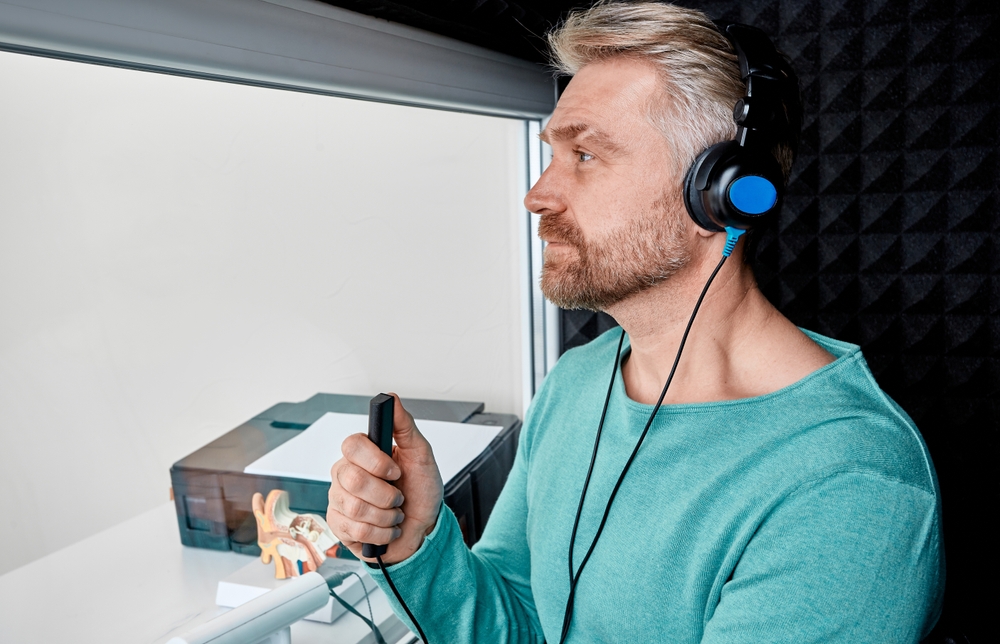Hearing loss is challenging–if not impossible–to self-diagnose. For example, you can’t really put your ear up to a speaker and subjectively measure what you hear. Which means that if you want to know what’s happening with your hearing, you need to take a test.
Now, before you start sweating or fidgeting anxiously, it’s important to point out that most hearing tests are quite easy and involve nothing more taxing than putting on a pair of fancy headphones.
But we get it. People don’t like tests. (Whether you’re a high school student or middle-aged medical patient, tests are just generally no fun.) Taking some time to get to know these tests can help you feel more prepared and, as a result, more comfortable. There’s almost no test easier to take than a hearing test!
How is a hearing test done?
We often talk about making an appointment with a hearing specialist to get your ears checked. And we’ve probably used the phrase “hearing test” once or twice. You might even be thinking, well, what are the 2 types of hearing tests?
Well, that’s slightly misleading. Because it turns out there are a few different hearing tests you might undergo. Each one is designed to measure something different or provide you with a specific result. The hearing tests you’re most likely to encounter include the following:
- Pure-tone audiometry: This is the hearing test you’re probably most familiar with. You wear some headphones and you listen for a tone. Hear a tone in your right ear? Raise your right hand. Hear the tone in your left ear? Same thing! This will test your ability to hear a variety of wavelengths at a variety of volumes. It will also measure whether you have more significant hearing loss in one ear than the other.
- Speech audiometry: Sometimes you can hear tones really well–but hearing speech remains something of a challenge. That’s because speech is generally more complex! During a speech audiometry test, you’ll be led into a quiet room and, again, be instructed to put on some headphones. Instead of making you listen to tones, this test will consist of audible speech at various volumes to detect the lowest level you can hear a word and still understand it.
- Speech and Noise-in-Words Tests: Of course, real world conversations rarely occur in a vacuum. A speech and noise-in-words test will go through the same process as speech audiometry–but the test occurs in a noisy room instead of a quiet one. This can help you determine how well your hearing is functioning in real-world situations.
- Bone conduction testing: This diagnostic is designed to measure the function of your inner ear. A small sensor is placed next to your cochlea and another is placed on your forehead. Sound is then sent through a small device. This test measures how well those sound vibrations travel through your inner ear. This test can often detect whether there is an obstruction in your ear (ex: if you can’t hear, but your inner ear is working perfectly there may be some kind of obstruction blocking the sounds).
- Tympanometry: Sometimes, your hearing specialist will want to test the overall health of your eardrum. This is done using a test called tympanometry. During this test, a small device will gently push air into your ear and measure just how much your eardrum moves. The results of this test can indicate whether there’s a hole in your eardrum, fluid behind your eardrum membrane, and more.
- Acoustic Reflex Measures: During this test, a tiny device delivers sound to your ear and measures the muscle response of your inner ear. It all happens by reflex, which means that your muscle movements can tell your hearing specialist a lot about how well your middle ear is functioning.
- Auditory Brainstem Response (ABR): An ABR test tries to measure how well the brain and inner ear are responding to sound. This is accomplished by placing a couple of strategically placed electrodes on the outside of your skull. Don’t worry, though! This test is completely painless. It’s one of the reasons why ABR testing is used on people from grandparents to newborns!
- Otoacoustic Emissions (OAE) Testing: This diagnostic is designed to measure how well your cochlea and inner ear is working. It does this by measuring the sound waves that echo back from your inner ear into your middle ear. This can detect whether your cochlea is working or, in some cases, if your ear is blocked.
What do the results of hearing tests tell us?
Chances are, you probably won’t undergo every single one of these hearing tests. Your hearing specialist will choose one or two tests that best suit your symptoms–and then go from there.
What do they look for in a hearing test? Well, sometimes the tests you take will reveal the underlying cause of your hearing loss. In other cases, the test you take may simply rule out other possible causes. Eventually, you and your hearing specialist will get to the bottom of any hearing loss symptoms you are experiencing.
In general, your hearing test will reveal:
- Whether you are suffering from hearing loss or experiencing the symptoms related to hearing loss.
- How severe your hearing loss is (or, if you’ve had multiple tests over the years, how your hearing loss may have progressed).
- Which wavelengths of sound you have the hardest time hearing (some people have hard time hearing high wavelengths; other people have a hard time hearing low sounds).
- The best approach to treating your hearing loss: Once you have determined the cause of your hearing loss, your hearing specialist will be able to more effectively offer treatment options.
What is the difference between a hearing test and a hearing screening? It’s kind of like the difference between a quiz and a test. A screening is very superficial. A test is designed to provide usable data.
The sooner you take this test, the better
That’s why it’s important to schedule a hearing test when you first notice symptoms. Don’t worry–this test isn’t going to be super stressful, and you don’t have to study. Nor are hearing tests invasive or generally painful. If you’re wondering, what should I not do before a hearing test–don’t worry, your hearing specialist will have all of that information for you.
Which means hearing tests are pretty easy–all you need to do is schedule them.
Find a provider in your area to schedule a hearing test by searching providers near you.



